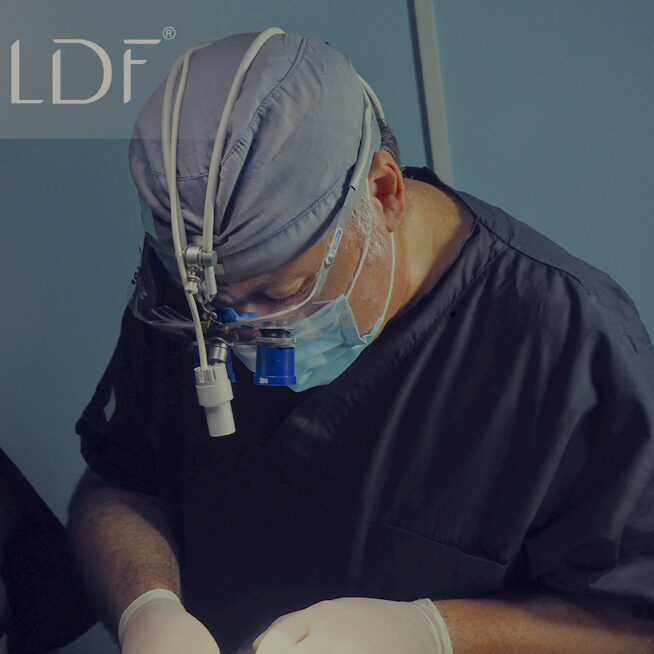FUE BULBIX autotransplant
Today the FUE (follicular unit explant) technique is the gold standard of hair transplant techniques. The STRIP technique has almost been abandoned and is in sharp decline given that the procedure is very permissive compared to the FUE. Today 70% of autotransplants are performed with the FUE technique, only 30% with the STRIP or FUSS.
Bulbix is a surgical instrument, patented by Dr. De Fazio, which allows each hair to be removed together with its bulb. The sample is taken from an area called the “donor” which normally corresponds to the nuchal and/or parietal area of the scalp. It is a very small hole with a variable diameter, in the order of 0.5 – 0.8 mm maximum, which heals spontaneously within a few days. All performed under local anesthesia such as that performed by the dentist without the need to sedate the patient.
What makes Bulbix a unique technology of its kind in the world is that it is able to measure the depth of the bulb during the explantation phase, allowing for the reinsertion of the follicular unit at variable height during the grafting phase.
This therefore allows the Implanter Bulbix device to reposition the bulb at the same depth in which it lay in the explant area, in order to re-establish a condition identical to that in which the hair was in the donor area. Precisely thanks to this process it is therefore possible to obtain results with an engraftment percentage close to 100%.

STRIP or FUSS
The STRIP or FUSS involves taking a strip of scalp from the patient’s neck (usually the donor area) under local anesthesia. The removed portion contains about 3,000 – 3,500 bulbs and has a length ranging from 10 to 24 cm and a width between 1 and 1.5 cm. After the sampling from the occipital region, the surgical incision is sutured and then the fractionation of the strip is performed, i.e. the miniaturization of the bulbs, dividing the various follicular units under the microscope. The units thus obtained will constitute the grafts that will be transplanted individually into the areas to be thickened with the same technique described in the FUE. Following the surgery and the graft of the bulbs, the patient will have to wear an elastic bandage around the neck for a couple of days and after about 10 days the stitches will be removed.
Trichoscan
The transplantation technique with the Bulbix System is supported by a careful trichological analysis which is usually carried out using the Trichoscan, capable of providing a precise pattern of the density of the scalp and the growth stage of the hair itself.
To carry out this examination it is necessary to shave a small portion of the head, in order to be able to take a series of photographs magnified by about 20 times, which highlight the real density of the hair and the state of activity of the follicles. In fact, each hair undergoes three different phases within its life cycle. There is therefore a first phase called Anagen, in which the follicle is in full growth, a second phase called Catagen, during which the activity slows down over 15 days, and a subsequent Telogen phase, much longer, in which the hair has completely ceased all vital activity to slowly make room for a new Anagen phase.
